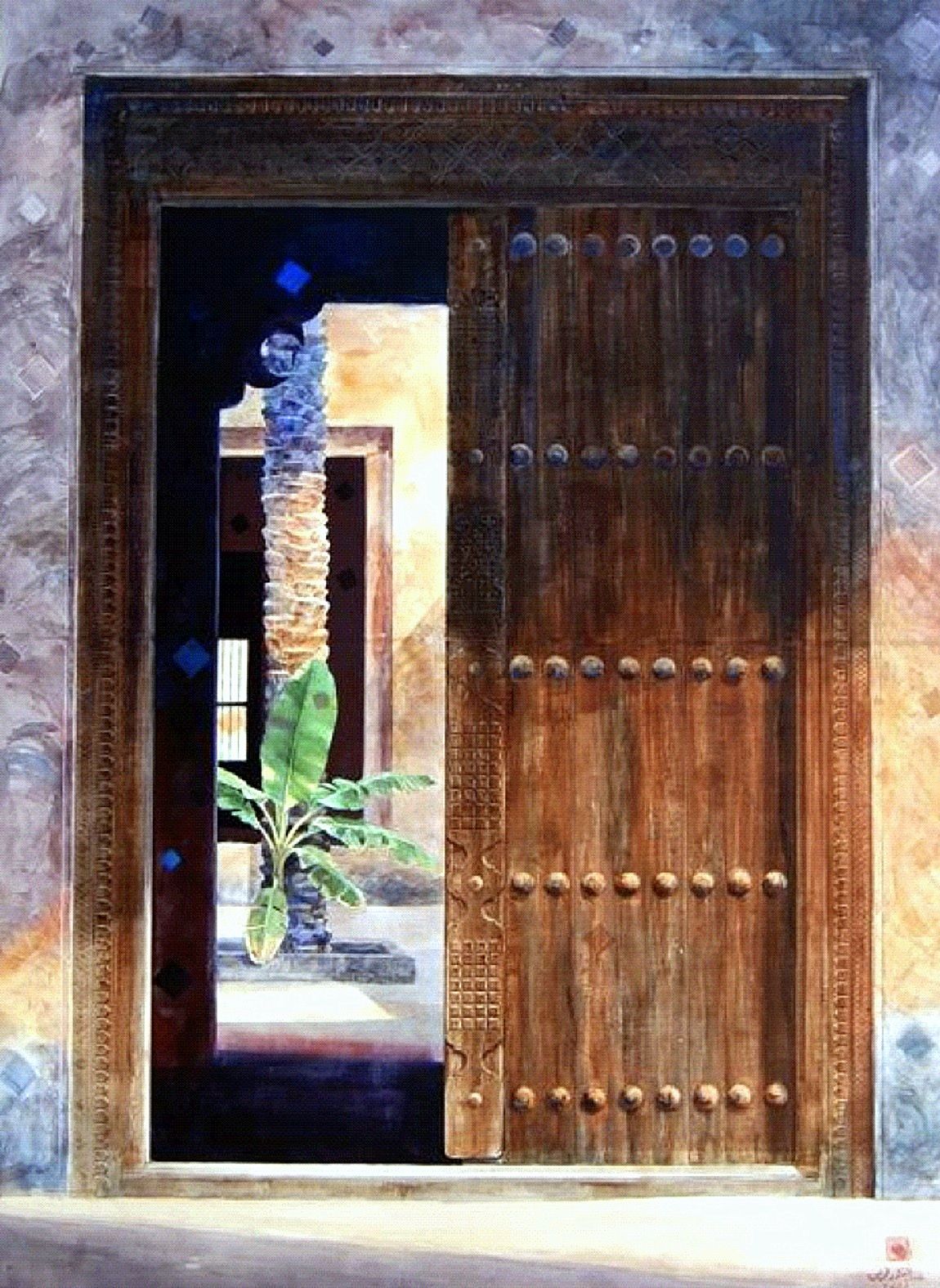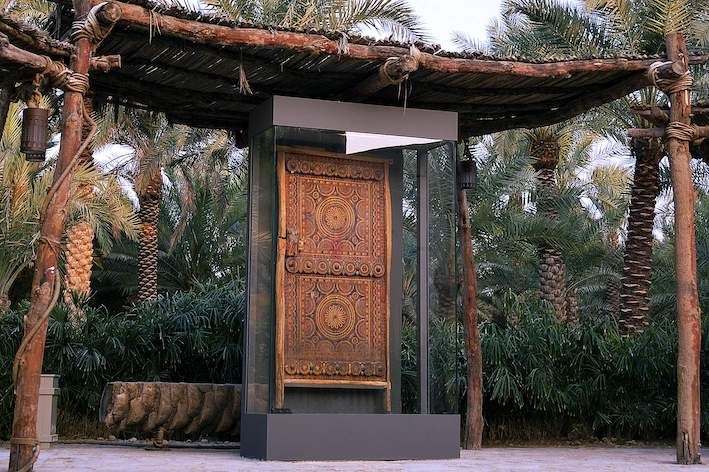Serenity of Doors & Sensitivity of Letters
Al-Barajeel – Between reality, romanticism and magic. Artworks by Abdul Qader Al Rais. Courtesy of the artist.
Abdul Qader Al Rais, godfather of Emirati fine arts who is known for his magical mastery of kaleidoscopic color, started his childhood in colorless poverty.
“All you could find then was black, and maybe just a bit of blue paint,” recalled the man whose versatility with the paintbrush for almost 60 years created masterpieces of what can best be described as magical realism.
“The abandoned, the alone, the cracks, the curves, and the shadows all mesmerized me, and I had to capture them somehow and gently bring out the magic in them,” said Abdul Qader.
The artist would transform relics of architecture, such as an abandoned traditional window with flower carvings, a wooden traditional Emirati door with geometric symbols, a pearl diving or fishing dhow boat—once symbolic of the heart of the nation—and wind towers known as Barjeel, into magnificent dream-like pieces reminiscent of imagined settings from the mythical tales of the beloved Arabian One Thousand and One Nights.
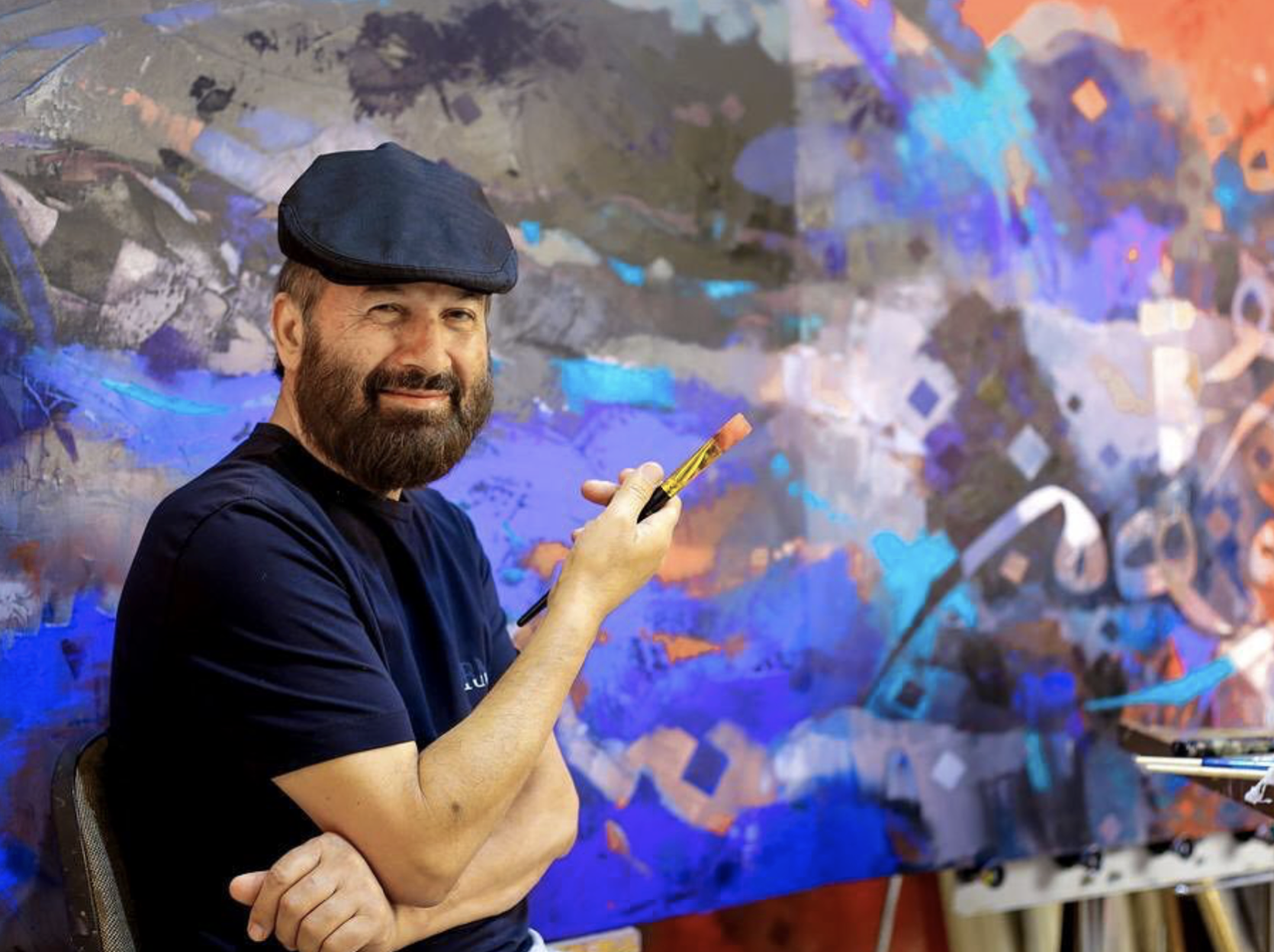
Abdul Qader Al Rais, a godfather of Emirati fine arts.
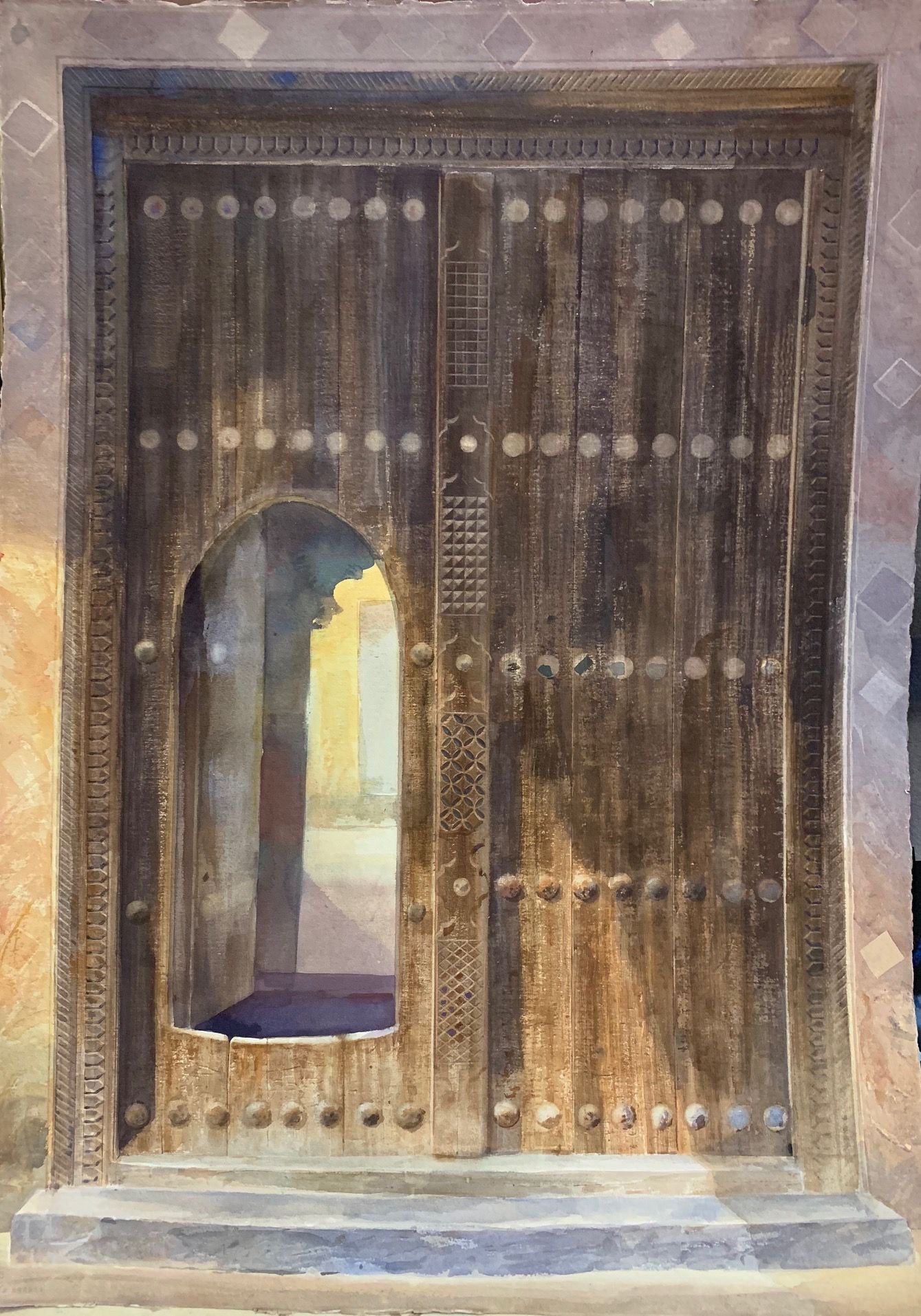
Traditional doors from the ‘Home,’ collection of the artist Abdul Qader Al Rais. Courtesy of the Abdulqader Alrais (@abdulqaderalrais)
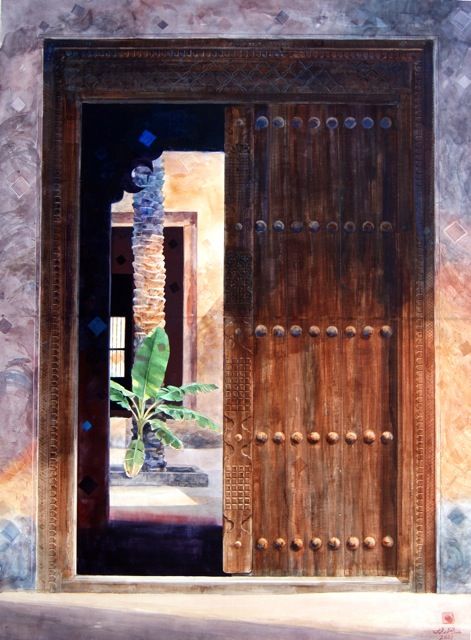
Traditional doors from the ‘Home,’ collection of the artist Abdul Qader Al Rais. Courtesy of the Abdulqader Alrais (@abdulqaderalrais)
The colors, the obvious and the more hidden symbols, the letters, his famous ‘Noqta’ (dot), and the social and historical subjects; each artistic piece created by Abu Qader told a different story.
The award-winning artist’s pieces are celebrated in people’s private homes, museums, foundations and institutions, government offices, and even on a Metro train greeting commuters in Dubai
in a country grappling with simplicity, few buildings, and no properly paved roads. A gray period in unbelievable contrast to the colorful Dubai of today; a futuristic, vibrant emirate in one of the world’s richest countries.
Around the same time, Europe was recovering from World War II, and the seeds of what would become the powerful European Union were being planted in the hopes of never returning to a devastating period of self-destruction. In many ways, Europe was cloaked in its own shades of gray and colorlessness as it recovered and rebuilt itself.
“Back then, it was Kuwait that was the golden child of the region. It was there that I found my colors,” said Abdul Qader.
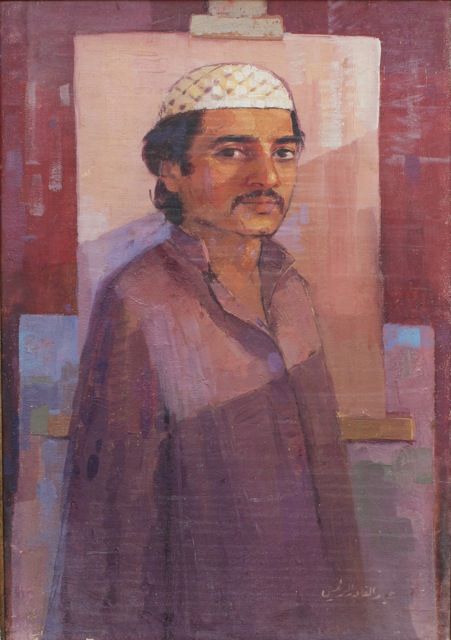
Self-portrait by Abdul Qader Al Rais. 1973, oil on board. Courtesy of
Abdulqader Alrais (@abdulqaderalrais)
It was the tragic loss of his father which took a 9-year-old Abdul Qader to live with his sister and her husband in Kuwait. Kuwait was thriving politically, economically, and culturally in the 1960s after its independence from Britain in 1961. Citizens and residents were welcomed, and young talents like Abdul Qader found support for his love of scribbles and colors.
“I would get packets of colors and paint that were brought in from France,” he said. “I had access to whatever I wanted, and I believe if I hadn’t gone to Kuwait when I did, I probably would not be where I am today.”
In Kuwait, he met other Arab pioneers in art and future founders like himself of different movements in art who were inspired by that pulsating hub for the creative and unique.
Gentle in his demeanor, soft-spoken, and with a sparkle that never leaves his eyes, Abdul Qader calms and intrigues all who meet him.
Perhaps part of this enigmatic persona is a result of his magical “hilm” (dream-like) interpretations of what catches his eye.
“I form a special bond with what I draw. It becomes an intimate relationship, private in its meaning, and expressed publicly in a certain mannerism after I get to know the subject of my piece very well,” said Abdul Qader.
With hundreds of pieces of work, each with its unique story and relationship to the artist and to the period it was drawn, Abdul Qader's work is impossible to box into one category of art.
Self-taught, his earliest pencil sketches capture a deep and sensitive child, one that often expressed loneliness through self-portraits of himself with a sad expression and almost glossy tear-filled eyes.
“Yes, I was lonely, and I was longing for my home and my family back in Dubai,” he said. “I believe the other positive impact of being away from home is that it matures you, and makes you appreciate the little things in life.”
As he matured into a young adult, the details in his art grew along with him.
Little birds in pencil came alive with watercolors, and faces of “imagined” girls and portraits of family members and friends in well-kept sketchbooks are an insight into a nostalgic soul, one who cherishes family, nature, and the concept of “home.”
This universal longing each of us has for a home, a family, and a sense of belonging is a repeated underlying theme in his work.
He is known for his colorful interpretation of the traditional Emirati doors, the first thing one sees when one arrives, as well as his interpretations of his Emirati and Arab identity through magical recreations of architecture and historic moments that shaped his life, as well as the life of his country and the region.
“I wanted to preserve our heritage in light of booming construction and push for the new and the different in the 1980s and 1990s in Dubai and the rest of the UAE,” he said, whose works of art are now an important archive and record of past locations, monuments, and designs.
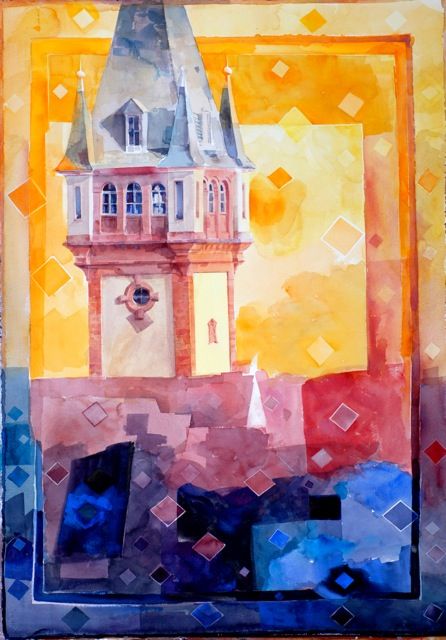
From Abdul Qader Al Rais ‘People and Time’ collection. Courtesy of Abdul Qader Al Rais @abdulqaderalrais
One such lost treasure is the Al Otaibah Mosque, which was lost to development but forever preserved in its majesty by Abdul Qader’s paint brushes. Titled “If you give thanks, I will give you more,” the 2016 piece incorporates his signature abstract cubic forms along with a realistic, almost photo-like black-and-white capture of the current exquisite Sheikh Zayed Grand Mosque, a window into the future.
“At the time, they were poor when they built Al Otaiba Mosque, and so they put everything they had into it. It was a remarkable structure full of character, and so I always go back to it in my memories and take the viewer back with me,” he said.
Abdul Qader calls great European masters like Leonardo da Vinci and Rembrandt “his teachers.” He also recalled the many hours he spent sketching da Vinci’s Mona Lisa and her “sad smile.” The more he explored, the more he wanted to have his own take on limitless abstract art.
“I wanted an Arab touch to it, so that is when I started experimenting with Arabic calligraphy and Arabic symbols and subjects, such as trees that grow here or landscapes specific to the area,” he said.
One of his most famous artworks involves Arabic letters, a collection called Hurufiyyat, where Abdul Qader conceptualized the deeper meaning a letter has in Arab culture.
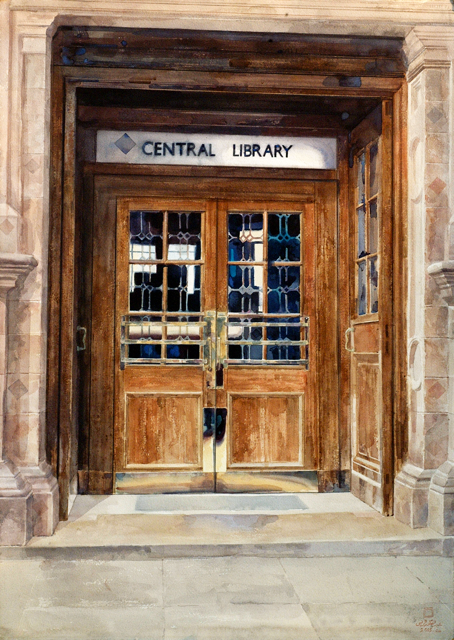
Traditional doors from the ‘Home,’ collection of the artist Abdul Qader Al Rais. Courtesy of the Abdul Qader Al Rais @abdulqaderalrais
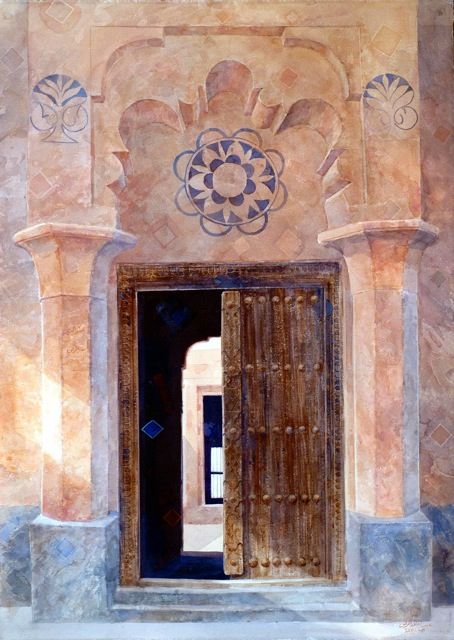
Traditional doors from the ‘Home,’ collection of the artist Abdul Qader Al Rais. Courtesy of the Abdul Qader Al Rais @abdulqaderalrais
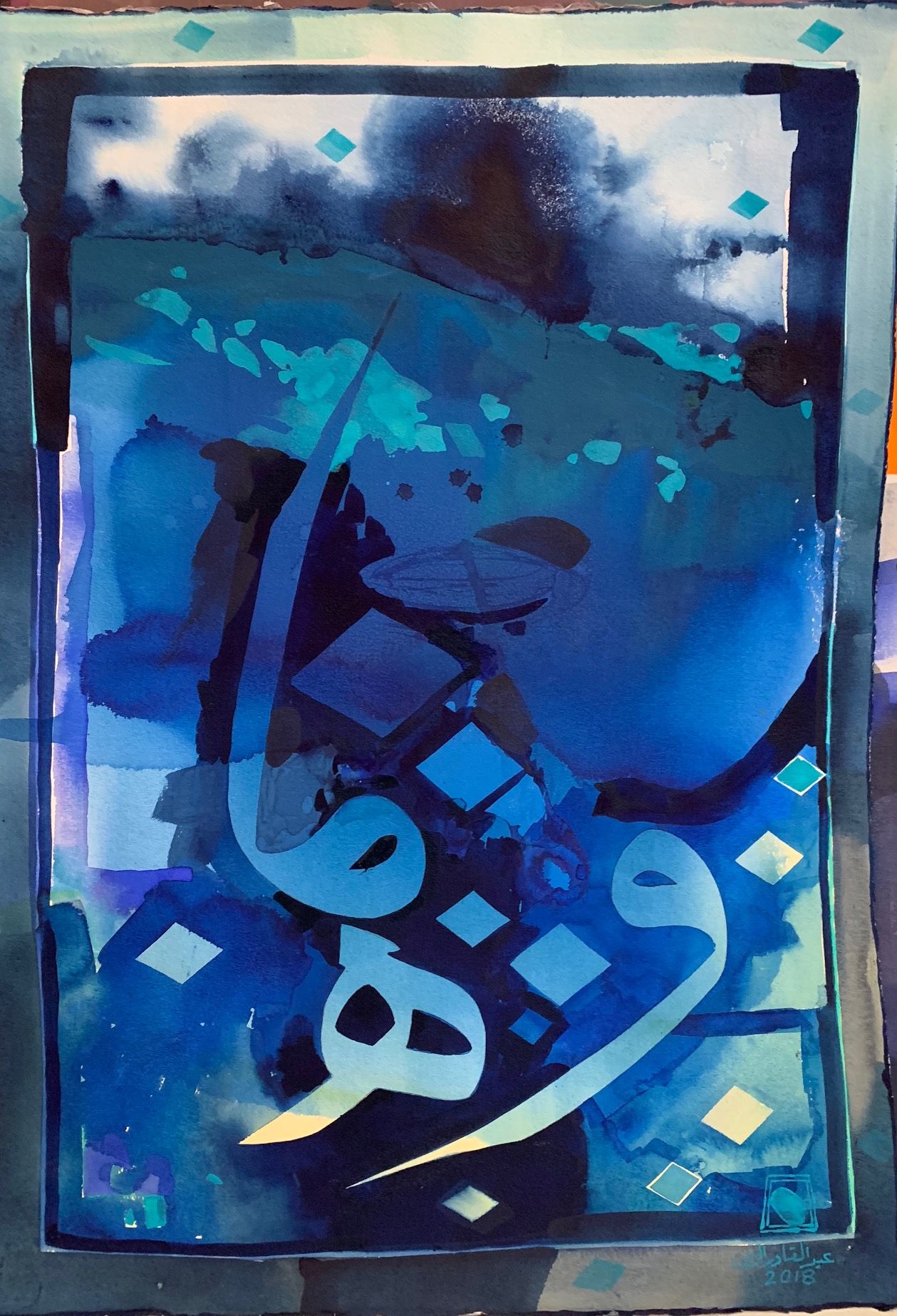
From Abdul Qader Al Rais ‘Hurufiyyat’ collection - Courtesy of Abdul Qader Al Rais @abdulqaderalrais
“I started with the Waw as it is unique aesthetically, curved with a deep meaning of connection. It is the letter that connects one with the other,” he said.
Meanwhile, the letter ‘Ha’ is like a “woman peeking from behind her burqa” (a face cover). Each of the Arabic letters has a personality in Abdul Qader’s art world.
A sensitive man to the suffering and plight of others, Abdul Qader had also painted pieces capturing the crises of the time, the suffering of those at war and those under occupation, such as the Palestinian cause. At the same time, he depicts this region’s resoluteness in the face of great adversity.
His first piece was sold in 1969. It was a portrait of Palestinian refugee boys and girls, whose anguish and pain were meticulously captured in their faces. It sold for 40 Dinars then (about 100 US Dollars), and was bought by a visiting European tourist and art collector.
“It was a great honor for me to have sold one of my pieces, especially one that was created with prayers from my heart for the suffering of children of war,” he said
He had moved back to Dubai in 1973, after the country united on December 2nd, 1971, forming the United Arab Emirates. He then joined the Ministry of Labour and earned a degree in Sharia (Islamic) law, where he would oversee disputes between laborers and employers and other issues.
At work, whenever he found a moment alone, he would draw, sketch, and paint. He became one of the first Emirati artists to dive into the wonderful world of colors and was a founding member of the Emirates Fine Arts Society in Sharjah. From 1989, he had a solo exhibition every year at the Cultural Foundation in Abu Dhabi, except for in 1996, when he had two.
Winning many awards and recognition, there is, however, one particular date that is of great significance to him, that he beams into a big smile each time he remembers it: January 5th, 1995.
“It was when I quit my job and became a full-time artist. It was the best day of my life,” he laughed.
Whether he is commenting on the current state of affairs through his art, immortalizing cultural and heritage structures and elements, or re-conceptualizing Arabic letters, his canvases have become cultural ambassadors of the UAE.
His artworks have been exhibited worldwide, including in Poland, Czech Republic, the United States, Germany, Kuwait, Saudi Arabia, France, and Morocco.
“The late Founding Father of the UAE, Sheikh Zayed, used to say that all we have in our lives is a gift, and our land is a gift, and so we must always be humble and give back with an open heart,” said Abdul Qader. “And my gift in this life is the gift of art; the gift of colors that I gift to all.”

From Abdul Qader Al Rais ‘Earth and Sky’ collection. Courtesy of the Abdulqader Alrais (@abdulqaderalrais)
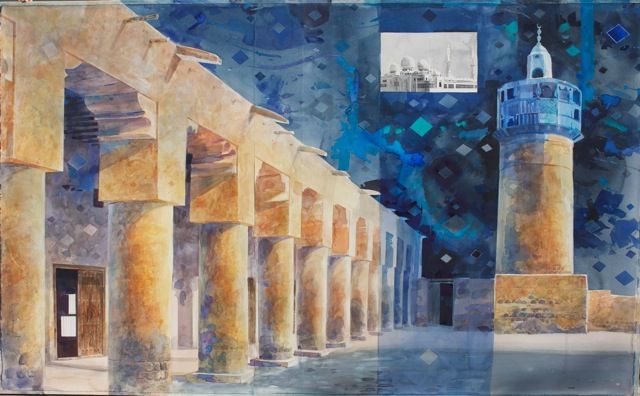
Titled ‘If you give thanks, I will give you more,’ features the lost Al Otaibah Mosque, as well as a black-white image of the current Sheikh Zayed Grand Mosque. Painted in 2016 by Abdul Qader Al Rais. Artwork courtesy of the artist.
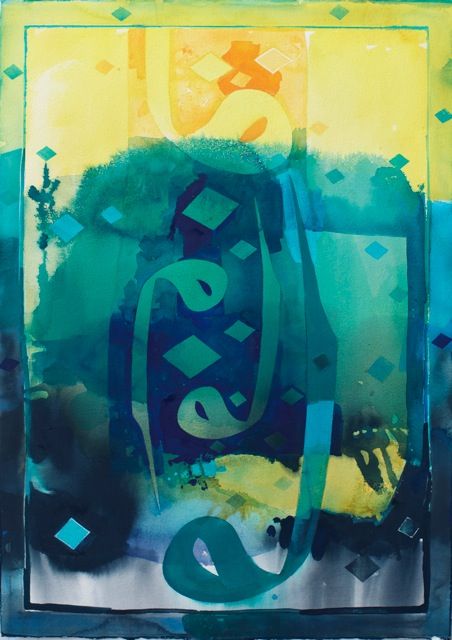
From Abdul Qader Al Rais ‘Hurufiyyat’ collection. Courtesy of Abdulqader Alrais (@abdulqaderalrais)

From Abdul Qader Al Rais ‘Hurufiyyat’ collection. Courtesy of Abdulqader Alrais (@abdulqaderalrais)

From Abdul Qader Al Rais ‘People and Time’ collection. Courtesy of Abdulqader Alrais (@abdulqaderalrais)
